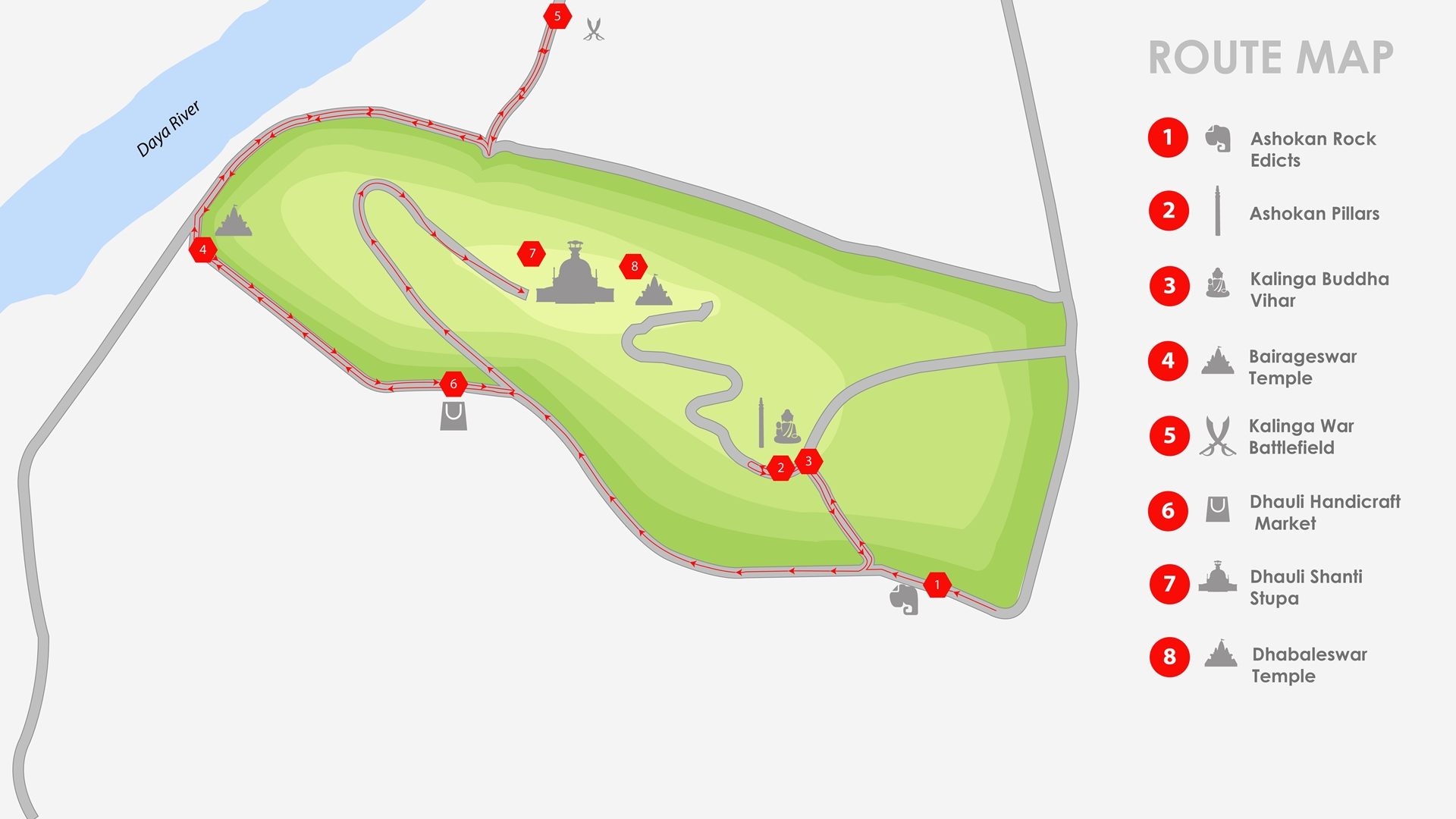Rediscover the valley of soulful transformation on the bank of historic Daya River
The Dhauli hill along the banks of the Daya River is a place like no other. The banks of the river was witness to one of the bloodiest conflicts in the annals of mankind yet it was unique in the sense that no other war ended with such a powerful message of peace and harmony as the Kalinga War. The place is a commemoration of the transformation of one of the cruelest kings to one of the kindest humans in Indian History-King Ashoka the great.
The foundations of the glorious Shanti Stupa could be a recent one, but the history associated with it goes back to the time before Christ. Buddha and his principles of life gained popularity in Kalinga after Ashoka’s invasion, and from here it travelled to other countries that acknowledge Buddhism as their chief religion, today.
A walk through Dhauli Hills with the magnificent Shanti Stupa tower over and the languid Daya River flowing below, has been frequented by Buddhist pilgrims, philosophers and propagators for centuries. On the way to Dhauli, one comes across the edicts erected by Ashoka, circa 260 BC, which have withstood the ravages of time to proudly proclaim the Principles of Dharma, as envisioned by Ashoka. Further up the road, is the dazzling white pagoda called Shanti Stupa of Dhauli, built in 1972 by the Japan Buddha Sangha and the Kalinga Nippon Buddha Sangha.
Story goes that after the war with Kalinga, while Ashoka was walking in the battlefield, he was overcome by the wanton death and destruction he has caused. This made him realise the futility of war and he vowed to be an evangelist of peach henceforth.
As one walks up the steps of the Shanti Stupa, you will be greeted by a set of large lion statues. Built on all four directions of the stupa these eight lion sculptures are symbolic of the bodhisattvas (sons of the Buddha) or Buddha’s lions. In Buddhist iconography, lions play the role of dharma protectors safeguarding the throne of Buddha. In the usual hemispherical structure, the Dhauli stupa is no different from the standard stupa construction style.
On the four sides of the stupa are four postures of Buddha; the one at the entrance being Dharmachakrapravartana, the one in the left side being the Bhumisparsa, the opposite consisting the Mahaparinirvana and the right side one being Varada. The remaining portion of the walls is filled with panels with illustrations taken from the life of Buddha.
| What you can expect? | Beautiful view of Bhubaneswar from the Stupa with the Daya River meandering along. |
|---|---|
| What To Bring | Hat or Umbrella, sunscreen, camera and comfortable walking shoes. |
| Fitness Requirement | Moderate level of fitness is required to explore the hills. One can also visit the Kalinga Nippon Monastery located nearby. |
| Entry fee | There is no entry fee involved however one has to pay a toll while ascending the hills. |
| Timings | 7 AM till 7PM Light and Sound show - The show speaks of the bravery and glory of the Kalinga Empire and the transformation of emperor Ashoka from Chanda Ashok to Dharma Ashok. The show is conducted in Odia,Hindi and English. Click here for details. |

